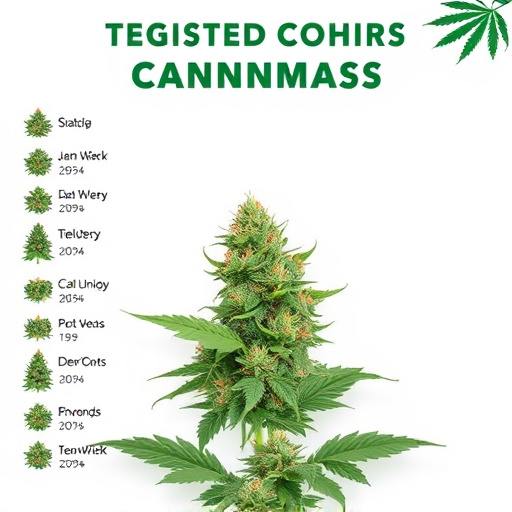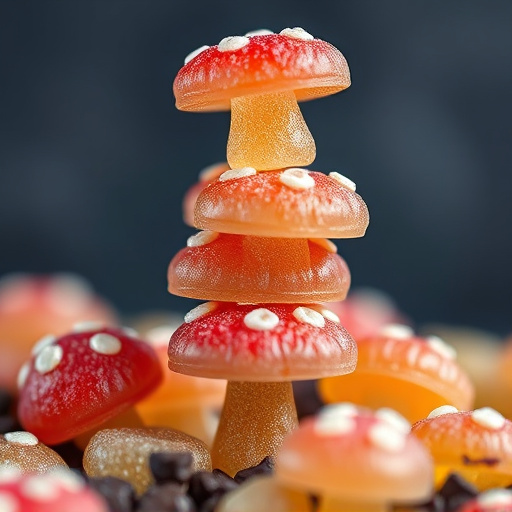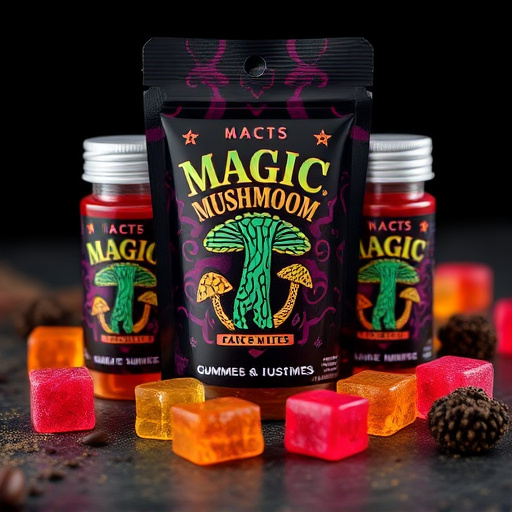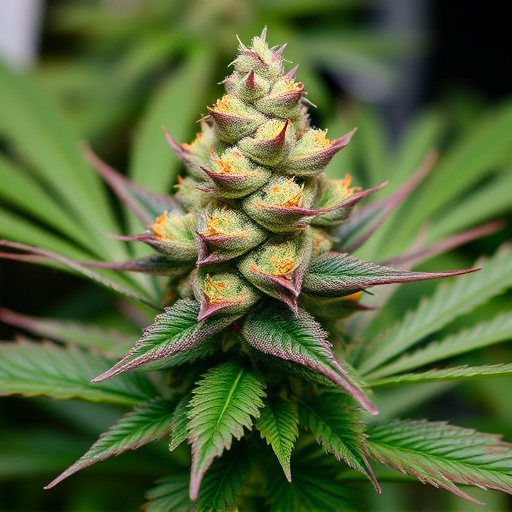Terpenes, nature's essential oils in cannabis, drive unique flavors, aromas, and therapeutic benefits. They interact with cannabinoids like THC and CBD, modulating effects. Popular best selling cannabis strains are carefully crafted to leverage terpenes' properties, offering targeted experiences for stress relief, sleep, and more. Growers are increasingly studying terpene profiles to develop treatments with anti-inflammatory, analgesic, and antimicrobial properties, emphasizing terpenes' role in personalized cannabis-based wellness.
Terpenes, the aromatic compounds in cannabis, play a pivotal role in defining flower quality and variety. They not only contribute to the distinct scents and flavors but also influence the user experience and therapeutic benefits. This article explores how terpenes shape the cannabis industry, focusing on their impact on popular strains, including best-selling cannabis varieties known for their unique terpene profiles that cater to diverse consumer preferences.
- The Role of Terpenes in Cannabis Flower Quality and Variety
- How Terpenes Impact the User Experience and Therapeutic Benefits
- Unlocking the Potential: Terpenes and Best-Selling Cannabis Strains
The Role of Terpenes in Cannabis Flower Quality and Variety

Terpenes play a pivotal role in shaping the unique attributes of cannabis flowers, contributing significantly to their quality and the diverse varieties available on the market. These aromatic compounds, naturally present in cannabis, are responsible for the distinct flavors and aromas that make different strains appealing to consumers. Each terpene offers its own sensory experience, ranging from sweet citrusy notes to earthy and woody tones, creating a sensory journey for users.
In addition to their impact on aroma and taste, terpenes also influence the overall effects of cannabis. Certain terpenes are known to enhance or modulate the psychoactive properties of cannabinoids like THC and CBD. For instance, myrcene, with its earthy scent, is often linked to relaxing and sedative effects, making it a desirable component in strains targeting stress relief and sleep. Understanding these interactions has led to the development of popular best-selling cannabis strains, each boasting specific terpene profiles tailored to diverse consumer preferences.
How Terpenes Impact the User Experience and Therapeutic Benefits

Terpenes, often referred to as the “aromatic molecules” of cannabis, play a pivotal role in shaping the user experience and therapeutic potential of various strains. These volatile compounds are responsible for the distinct scents and flavors associated with different cannabis varieties, but their influence extends far beyond sensory appeal. Research suggests that terpenes interact synergistically with cannabinoids, such as THC and CBD, to enhance or modify their effects. For instance, myrcene, a common terpene in many best-selling cannabis strains, is known for its sedative properties, promoting relaxation and potentially aiding sleep.
The impact of terpenes on the user experience can be profound, offering personalized benefits tailored to individual preferences. In addition to their psychological effects, certain terpenes have demonstrated anti-inflammatory, analgesic, and antimicrobial properties in studies. This diverse range of therapeutic attributes contributes to the growing interest in understanding terpene profiles, especially within popular strains, to optimize cannabis-based treatments for various conditions.
Unlocking the Potential: Terpenes and Best-Selling Cannabis Strains

Terpenes, often referred to as nature’s essential oils, are a key component in unlocking the full potential and unique characteristics of cannabis flowers. These aromatic compounds, produced by various plants, including cannabis, play a significant role in shaping the flavour profile, aroma, and even therapeutic benefits of different strains. When it comes to the best-selling cannabis strains, terpenes often take centre stage as they contribute to the desirable attributes that captivate consumers.
Each terpene offers distinct sensory experiences, ranging from uplifting citrus notes to earthy, woody tones, which can enhance or alter the effects of cannabinoids like THC and CBD. Certain terpenes are associated with specific effects; for example, myrcene is known for its sedative properties, while limonene boosts mood and energy. As a result, growers and cultivators carefully consider terpene profiles when developing new strains, ensuring that best-selling cannabis varieties not only deliver exceptional tastes but also offer tailored experiences to cater to diverse consumer preferences.
Terpenes play a pivotal role in shaping the diverse range of cannabis varieties available today, from enhancing aromatic profiles to modulating the therapeutic effects. By understanding their influence on both flower quality and user experience, cultivators can create exceptional strains that cater to various preferences. Furthermore, the unique terpene combinations found in best-selling cannabis strains highlight their potential as powerful tools for tailoring cannabis experiences, ensuring consumers gain access to a wide array of benefits tailored to their needs.














